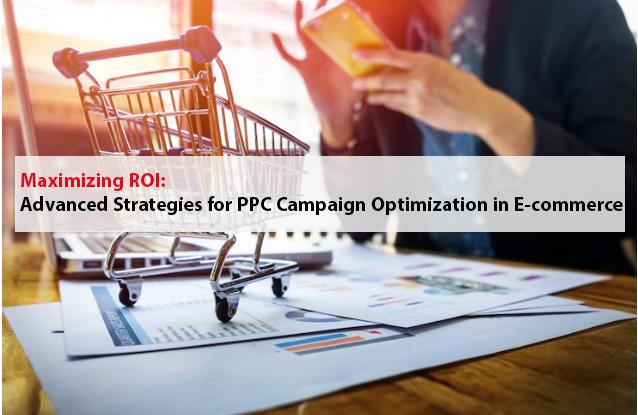In the dynamic landscape of e-commerce, businesses are constantly seeking innovative strategies to stand out and drive sales. Pay-per-click (PPC) advertising has emerged as a powerful tool for e-commerce enterprises, offering a targeted approach to reach potential customers and maximize returns on investment. In this comprehensive guide, we’ll delve into the intricacies of PPC services tailored specifically for the e-commerce industry, exploring key strategies, best practices, and actionable insights to propel your online business to new heights.
Understanding the Power of PPC for E-commerce
PPC advertising allows e-commerce businesses to place targeted ads across various online platforms, paying only when users click on their ads. This cost-effective model enables precise targeting, measurable results, and the flexibility to adjust campaigns in real-time. With the right approach, PPC can drive qualified traffic to your e-commerce site, increase conversions, and ultimately boost revenue.
Crafting a Winning PPC Strategy
- Keyword Research: Start by conducting thorough keyword research to identify relevant search terms and phrases with high commercial intent. Focus on long-tail keywords specific to your products or niche, as they tend to attract more qualified leads.
- Ad Copy Optimization: Craft compelling ad copy that highlights unique selling propositions, promotions, and calls to action. Use ad extensions such as sitelinks, callouts, and structured snippets to provide additional information and improve ad visibility.
- Landing Page Optimization: Ensure that your landing pages are optimized for conversions, with clear and relevant messaging, intuitive navigation, and prominent calls to action. Tailor landing pages to match the intent of the corresponding ads for a seamless user experience.
- Audience Targeting: Leverage audience targeting options to reach potential customers based on demographics, interests, behavior, and purchasing intent. Segment your audience and tailor your ad messaging to resonate with specific customer segments.
- Ad Scheduling and Budget Management: Use ad scheduling to display ads during peak shopping hours and adjust your budget allocation based on performance metrics. Monitor campaign spend closely and reallocate resources to high-performing campaigns to maximize ROI.
Harnessing the Power of Shopping Ads
For e-commerce businesses, shopping ads (or product listing ads) are a game-changer, allowing you to showcase your products visually at the top of search engine results pages. To optimize your shopping ads:
- Create High-Quality Product Feeds: Ensure that your product feed contains accurate and up-to-date information, including product titles, descriptions, images, prices, and availability.
- Optimize Product Titles and Descriptions: Use relevant keywords in your product titles and descriptions to improve visibility and attract qualified traffic. Highlight key features, benefits, and unique selling points to entice potential customers.
- Implement Structured Data Markup: Incorporate structured data markup (such as schema.org) to provide search engines with additional information about your products, enhancing visibility and click-through rates.
- Monitor Performance and Make Adjustments: Regularly monitor the performance of your shopping campaigns, analyzing key metrics such as click-through rate, conversion rate, and return on ad spend. Adjust your bidding strategies, product targeting, and ad creatives based on performance insights to optimize campaign performance.
Dynamic Remarketing for E-commerce Success
Dynamic remarketing allows you to re-engage past visitors to your e-commerce site with personalized ads showcasing products they’ve previously viewed or shown interest in. To maximize the effectiveness of dynamic remarketing:
- Segment Your Audience: Segment your audience based on their browsing behavior, cart abandonment, purchase history, and other relevant criteria. Tailor your remarketing ads to resonate with each audience segment, addressing their specific needs and preferences.
- Dynamic Ad Creation: Create dynamic ads that dynamically populate with products based on each user’s interactions with your website. Showcase relevant products, promotions, and personalized recommendations to encourage repeat visits and conversions.
- Optimize Ad Frequency and Timing: Strike the right balance with ad frequency and timing to avoid overwhelming users with excessive ads. Use frequency capping and ad scheduling to control the frequency and timing of your remarketing ads, ensuring a positive user experience.
- A/B Testing and Optimization: Continuously test and optimize your remarketing campaigns to improve performance over time. Experiment with different ad creatives, messaging, offers, and targeting strategies to identify what resonates best with your audience.
Conclusion
In an increasingly competitive e-commerce landscape, leveraging Best PPC services is essential for driving targeted traffic, increasing conversions, and fueling growth. By implementing a strategic approach to Top PPC advertising, optimizing your campaigns for maximum effectiveness, and staying agile in response to changing market dynamics, you can unlock the full potential of PPC to propel your e-commerce business to unprecedented success. Embrace the power of PPC and watch your online sales soar to new heights.






